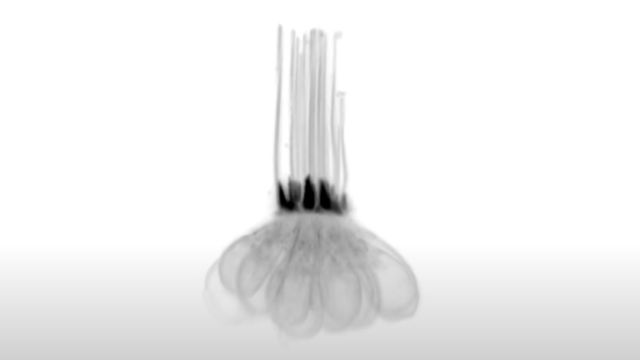Register for free to listen to this article
Thank you. Listen to this article using the player above. ✖
Want to listen to this article for FREE?
Complete the form below to unlock access to ALL audio articles.
Scientists have discovered how two genes control the regeneration of sensory hair cells in zebrafish, offering new clues for addressing hearing loss in humans. Published in Nature Communications, the study, led by Tatjana Piotrowski, PhD at the Stowers Institute for Medical Research, provides a clearer picture of how stem cells and their progeny divide to replenish damaged tissue – a process that fish perform naturally but humans cannot. These findings could open new avenues for regenerative medicine research targeting hearing and balance disorders.
Cell regeneration and hearing loss
The inability to regenerate certain cell types – like those in the human inner ear – has long challenged scientists seeking treatments for permanent hearing loss. In contrast, zebrafish regenerate sensory hair cells effortlessly. By studying how zebrafish manage this regeneration, researchers hope to understand why similar repair mechanisms don’t exist in humans and whether that could someday be changed. The work focused on how cell division is regulated to replace lost cells without depleting essential stem cells, a critical step toward unlocking regenerative therapies.
Distinct genes guide regrowth
The team investigated how different types of support cells contribute to regeneration in zebrafish sensory organs called neuromasts. Using gene sequencing and genetic manipulation, the researchers were able to pinpoint and then disrupt the function of key genes guiding cell division in different neuromast support cell populations. Additionally, neuromasts are located on the skin of zebrafish, allowing direct visualization of the altered cells.
The key findings of the study were:
- Zebrafish neuromasts rely on two distinct support cell types for hair cell regeneration – actively dividing stem cells and hair cell progenitors – and each uses a different cyclinD gene to regulate cell division.
- Disabling a gene halted division in only the targeted cell population, demonstrating independent control.
- Transplanting the stem-specific cyclinD gene into the progenitor cell type restored division, suggesting modular function.
- When the progenitor-specific cyclinD gene was disabled, the cell did not divide but did create a new hair cell.
- Precise regulation of cell division is necessary for the neuromast to renew itself while maintaining a stable reservoir of supporting stem and progenitor cells.
- The process uncouples cell division from differentiation, offering unique insights for regenerative biology – including those that may mirror regenerative capabilities of the blood and gut systems in humans.
Insights for broader tissue repair
This study sheds light on how regeneration can occur without exhausting a tissue’s stem cell pool. Understanding how zebrafish maintain this balance provides a powerful model for investigating regeneration in more complex organisms. Since cyclinD genes also regulate cell proliferation in human systems such as the gut and blood, this work may have far-reaching implications for treating degenerative diseases. By identifying how stem cells know when to divide and differentiate, scientists are one step closer to mimicking these abilities in mammals.
If researchers can translate these findings to human biology, it may lead to future therapies for hearing loss, balance disorders and possibly other degenerative conditions. Activating similar pathways in mammals could offer new strategies to restore tissues that currently cannot regenerate, dramatically expanding the field of regenerative medicine.
However, while zebrafish serve as a powerful model, their regenerative abilities far exceed those of mammals. It, therefore, remains unclear whether the same genetic mechanisms exist in humans or could be activated therapeutically. Translating these findings into clinical applications will require further research into how human sensory cells behave and whether external stimuli – like gene editing or pharmaceutical intervention – could safely trigger similar regenerative responses without causing uncontrolled cell division or tumor formation.
Next steps in the lab
The Piotrowski Lab plans to explore whether the cyclinD gene functions observed in zebrafish are present in other regenerative organs or tissues. The team will also examine the conditions under which stem cells can be reprogrammed or redirected to trigger regenerative behavior in mammals. The long-term goal is to determine whether these mechanisms can be leveraged to develop interventions for hearing loss and beyond.
Reference: Lush ME, Tsai YY, Chen S, et al. Stem and progenitor cell proliferation are independently regulated by cell type-specific cyclinD genes. Nat Commun. 2025;16(1):5913. doi:10.1038/s41467-025-60251-0
